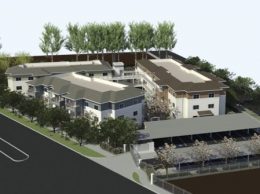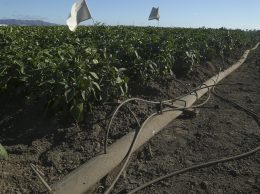California losing benefits of green landscape
With California now four years deep into a drought, and more than $350 million frivolously burned in turf removal rebates, Californians want to know … where is the water?
At $4,073 per acre-foot, turf removal is the state’s most expensive and least reliable water supply source by far, almost twice as expensive as seawater desalination, which costs $2,500 per acre foot. Additionally, more programs should have been put in place to buy water from agriculture, not subsidizing lawn removal for a select few, with the repayment on the backs of all rate payers.
Instead, politicians have advanced campaigns to rip out turf and transform the California landscape into a desert, choosing symbolism over substance.
Even if every residential lawn in California was pulled out, only 7 percent of water would be saved. The state could save more water and preserve the environment through intelligent irrigation systems and other existing in-home conservation devices. Public landscapes, parks, sports fields and golf courses account for another 2 percent of water in the state. Where do they expect our children to play?
The 9 percent of water spent on statewide landscapes is well worth it, and it seems silly that government has singled out California greenery when one learns of the countless benefits green landscapes have on our quality of life.
Environmental experts have strongly advised against ripping out our green landscapes, as lawns and trees play an integral role in benefitting the urban environment by preventing heat islands.
Furthermore, removing grass will reduce sequestering of carbon and contribute to greenhouse gases; less turf will also contribute to the production of more dust and particle pollution. Lawns also produce oxygen; 2,500 square-feet of turf supplies enough oxygen for a family of four.
Dennis R. Pittenger, an environmental horticulturalist at UC Riverside, describes unintended consequences to include damage from dropping branches, tree failures leading to significant property damage and potential for human injury, an increase of risk in fires and more. He details more of this research and views on the drought in a document he co-authored with his colleague Donald R. Hodel titled “9%: Perspective on the California drought and landscape water use.”
If lawns and trees are removed, history could repeat itself. Take China, for example. In the 1960s, a proclamation came forth ruling that all symbolism of capitalism be eliminated, which included the removal of green lawns and trees. As a result, the Chinese discovered a variety of environmental problems escalating every year, including urban heat islands, dust storms which carry microscopic organisms that increased likelihood of serious human diseases, air and noise pollution and soil erosion. Today, China is repairing its landscape in an effort to reverse the environmental consequences with a 10-year program spending $2.4 billion to plant 170,000-square-miles of trees and greenery.
Is this the future of California, to be paying hundreds of millions to tear out turf, then turn around to spend hundreds of millions more putting it back in to save our environment?
A substantial amount of funding has been put into play to market and misinform the public about turf removal. Now the state Department of Water Resources is moving to put in place permanent landscape regulations setting low water use limits designed to severely reduce turf areas forever.
As of Jan. 2, 2016, homeowners will have to get a building permit when renovating their yards and will be required to submit plans consistent with the new low water use budgets. The effect will be to limit landscape plant types. Think about it: you will no longer be able to choose what the landscape around your house will look like.
I encourage Californians to read Pittenger’s report and learn the true environmental benefits of turf and other lush greenery and make up your own mind if grass is good or bad for the future of California.
It will take an uprising of informed citizens to stand up and say ‘No, this is not the future we want for our children, for our environment,’ and to say ‘It’s OK to love your lawn.’
• Jurgen Gramckow is president of Southland Sod Farms in Oxnard.










